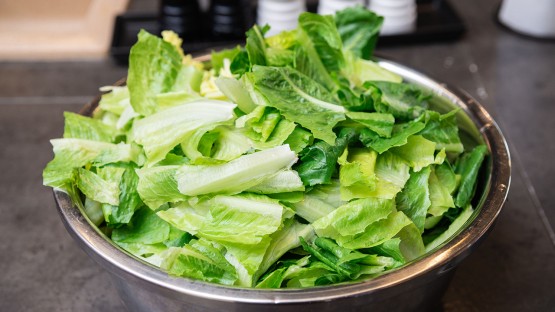E. coli outbreaks in romaine lettuce have long been a public health concern. Between 2000 and 2020, at least 42 foodborne illness outbreaks associated with romaine lettuce were reported to the Centers for Disease Control and Prevention’s National Outbreak Reporting System.
And yet, our affection for romaine remains: Of all leafy greens, Americans spend the most on romaine (with iceberg behind by a head).
A new paper in Scientific Reports suggests that a combination of efforts in the field, and even postharvest techniques, can minimize risk to human health. Co-authored by Renata Ivanek, a professor in the Department of Population Medicine and Diagnostic Sciences in the College of Veterinary Medicine, and Martin Wiedmann, the Gellert Family Professor in Food Safety in the College of Agriculture and Life Science, the paper outlines interventions likely to make a concrete difference in the safety of the nation’s romaine.
“This study supports that interventions should focus on reducing produce contamination via contaminated irrigation water, on assuring that produce washes applied during processing consistently deliver reasonably high reductions of bacterial numbers, and on improving temperature control during distribution,” Wiedmann said.
Ivanek said the study aimed to help industry find ways to do better and to provide consumers a better guarantee of product safety. They began with an advisory council of industry leaders, she said.
“We tried to describe the system as holistically as possible to account for different risk factors and how they could have interactions,” she said. “There’s not just one intervention that will save us all. We spent a lot of time trying to understand the preharvest component, especially the irrigation water piece and how much risk can be explained by that.”
Study results suggested that much contamination originates from irrigation with untreated surface water applied through overhead spray irrigation systems. They found that risk from irrigation was reduced either through water treatments or by switching to furrow or drip irrigation.
“While not the most common system, spray irrigation is used in a number of fields for its benefits during germination, its cooling effect on plants and other reasons. But drip or furrow irrigation reduces the probability that water directly touches the leaves,” Ivanek said, acknowledging that switching to these other irrigation systems introduces significant potential additional costs to grower.
Moving into the postharvest area, the researchers – who included Ece Bulut, formerly a research associate in the Department of Population Medicine and Diagnostic Sciences and now a senior analyst for Walmart Sourcing – focused on what happens in the processing facilities.
“Lettuce is harvested in batches and all lettuces are washed,” Bulut said. “There is a lot of research in how to make that wash better, but there are still knowledge gaps in the effective amount of chemicals to use and other details of the postharvest wash process to reduce variability of contact time with the wash chemicals.”
And finally, Ivanek and her co-authors explored the importance of maintaining proper cold storage temperatures along the entire supply chain to romaine’s final destination.
“Time and temperature play a role in food safety, and also in food quality and shelf life,” she said, describing a “perfect storm” if contamination happens at the farm or processing level and then improper transportation temperatures allow bacteria to grow.
With Health and Human Services Secretary Robert F. Kennedy Jr.’s current focus on the “Make America Healthy Again” initiative, there is a significant push for Americans to eat more fresh fruits and vegetables. Many of them, as in the case of romaine, are eaten in their raw state, without a cooking “kill step” for bacteria.
The comprehensive practices and interventions explored in this study intend to aid decision-makers in establishing and enhancing food safety best management practices, Ivanek said.
“The big message is the American food supply chain is extremely safe compared to other countries,” she said. “We’re exploring how can we make it even safer and where we should put additional effort.”
